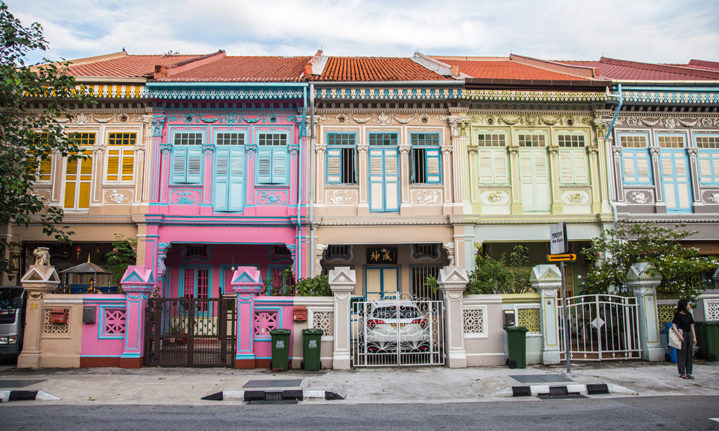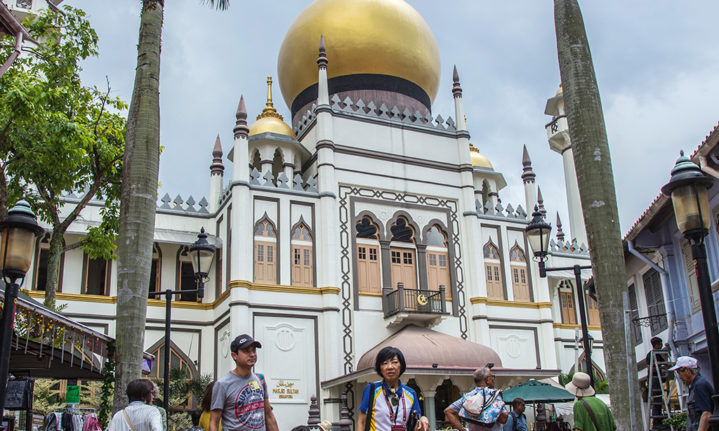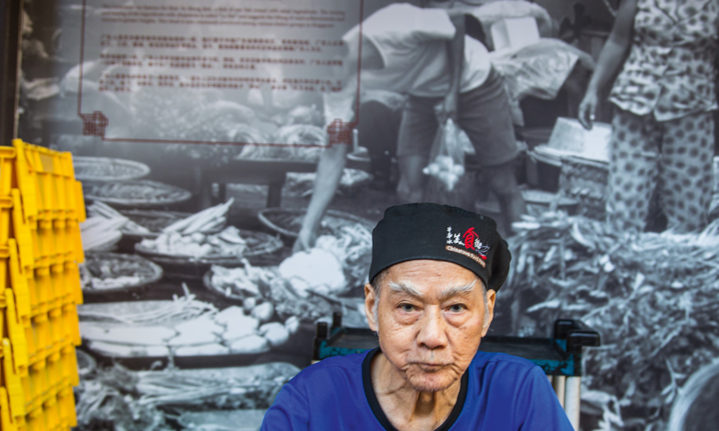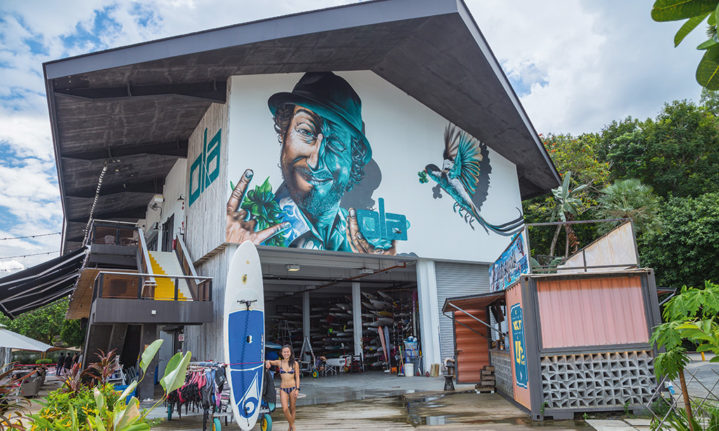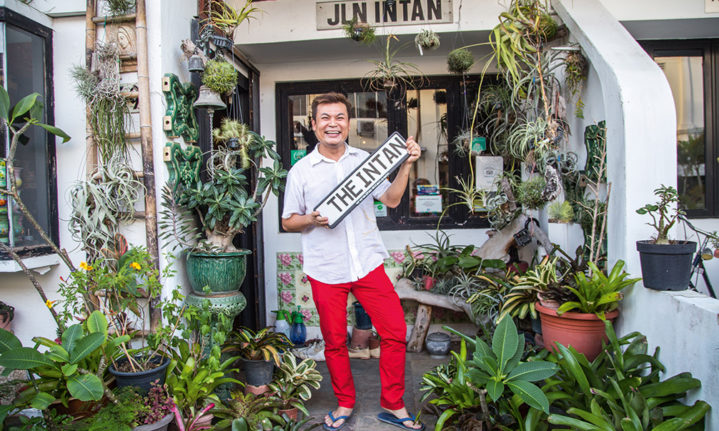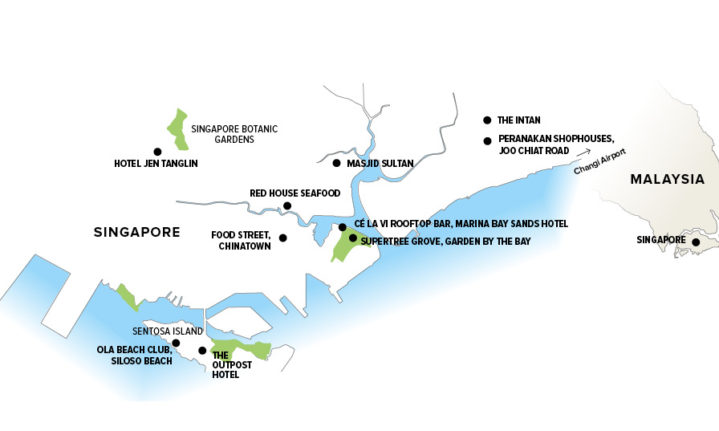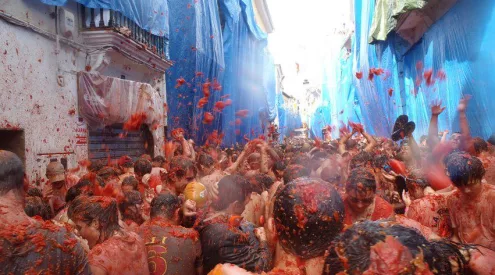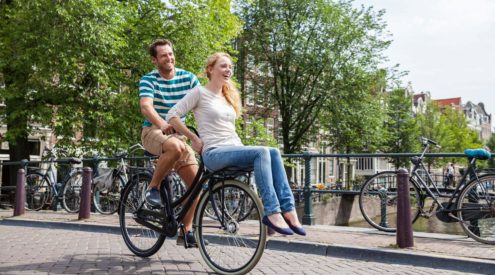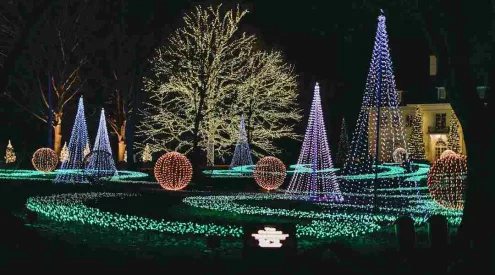This city-nation is a hub linking travellers to places all over Southeast Asia. Here’s why you should consider pausing a bit longer to explore the ‘City in a Garden’.
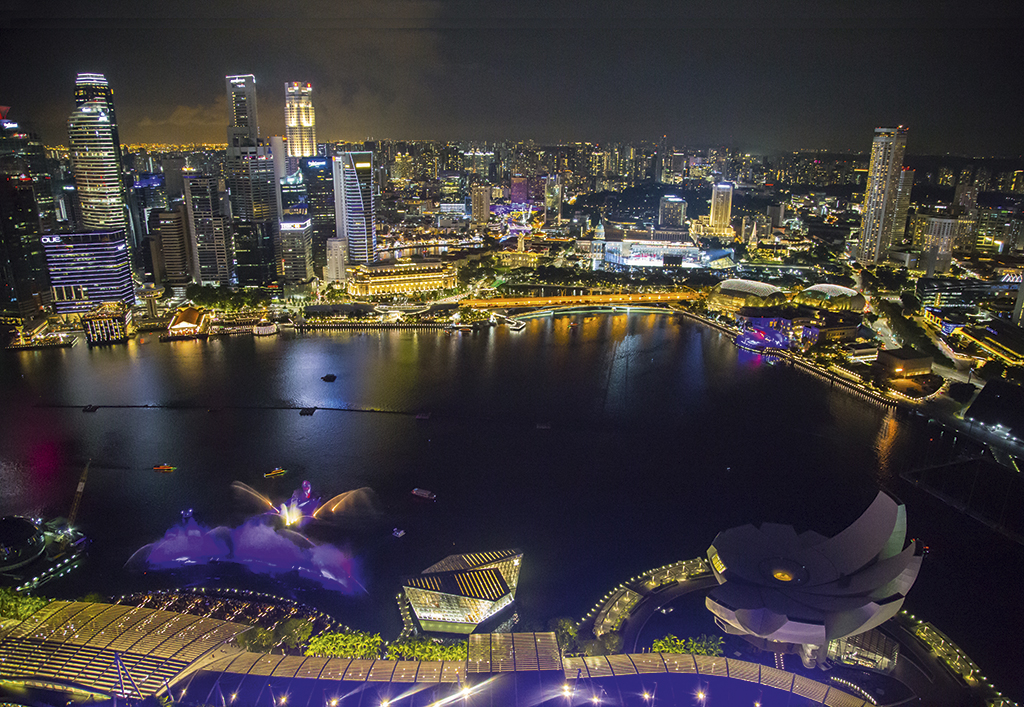
The view from Cé La Vi rooftop bar overlooking Marina Bay, at the mouth of the Singapore River. Image credit: Elise Kirsten
Antiques fill Alvin Yapp’s home like tottering totem poles. There are beaded wedding shoes, embroidered money pouches and cloths, ornate jewellery boxes, vintage photographs, hundreds of carved nativity figurines and brightly coloured enamel spittoons lining the stairway like runway beacons. ‘When we talk about Peranakan culture, there is always Chinese, Malay and European culture coming together. I am Perakan,’ said Alvin, as I sat opposite him on a long wooden seat surrounded by his eclectic mix of collectables. I was at The Intan, a Peranakan cultural museum in Singapore’s Katong District that doubles as Alvin’s home.
Wearing bright red jeans as flamboyant as his personality, Alvin’s theatrical manner brought his culture, which was new to me, alive. The Peranakan Chinese (or Straits Chinese) trace their origins back to the 15th century when migrants from the mainland came to the island looking for work. They settled, married local Malay women and from 1819 lived under British rule. Through cultural assimilation, Chinese, Malay and European influences all simmered in a rich broth to produce the Peranakan culture. Peranakans make up a small percentage of Singaporeans, most of whom are of Chinese, Malay or Indian descent. I had come to the island with a group of South African journalists, hosted by the Singapore Tourism Board and Changi Airport Group, to explore the best of what the city-state has to offer. Our jam-packed, five-day itinerary took us from an underground bar on Ann Siang Hill to the highest vantage point in the city; from the lively Indian, Malay and Chinese quarters to fun-filled Sentosa Island.
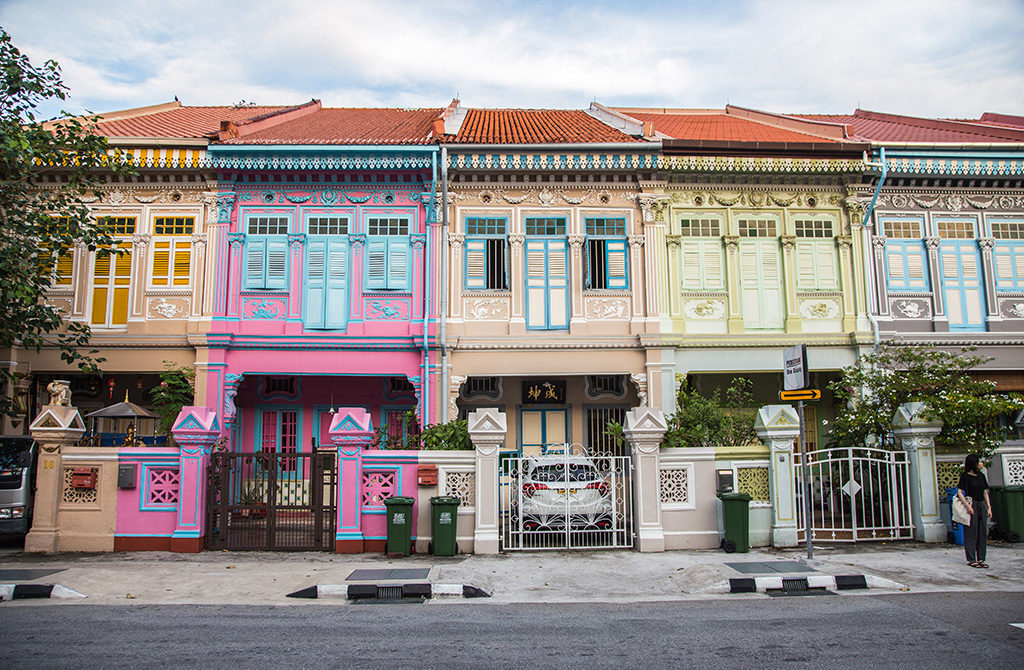
Each with its own ‘grand’ entrance gate, the Peranakan shophouses on Joo Chiat Road replaced cotton and coconut plantations. Image credit: Elise Kirsten
We’d arrived at The Intan after lunching at Candlenut, the world’s only one-Michelin-starred Peranakan restaurant, headed by chef Malcolm Lee. The cuisine was a fusion of Malay and Chinese cooking brought to life with local herbs and spices. Highlights of the 10-course meal were Westholme wagyu beef-rib rendang, blue-swimmer-crab curry and a dessert of – and my first taste of – the notoriously stinky durian fruit, puréed with coconut granita and gula melaka (palm sugar). After such refined dining on Dempsey Hill and full immersion in all things Peranakan, I left The Intan in the late afternoon as the day’s heat began to mellow. Walking through the residential part of the Katong District towards Joo Chiat Road, I noticed mango trees – oddly, the hanging fruit was bagged in plastic. I later found out that this is done to protect the fruit from insects.
Joo Chiat Road, pictured in tourist brochures, is known for its brightly coloured Peranakan shophouses. Built from the 19th to mid-20th century, they traditionally housed a family on the upper storey, with their business downstairs.The architecture of Joo Chiat’s restored homes from the 1920s and 1930s is a curious combination of styles. The fretwork on the wooden roof eaves is an example of Malay influence. The ornamentation of the windows framed by columns and the decorative relief work on the facades – which looked liked piped icing – are permutations of European baroque and rococo. It was delightfully vibrant – like Cape Town’s Bo-Kaap on steroids. That evening, in stark contrast to the high-society lunch, I dined at Red House Seafood, a Chinese cafe almost devoid of decor. Sitting on a plastic chair among animated locals, I used my hands to tear off pieces of the most succulent crab I’d ever tasted.
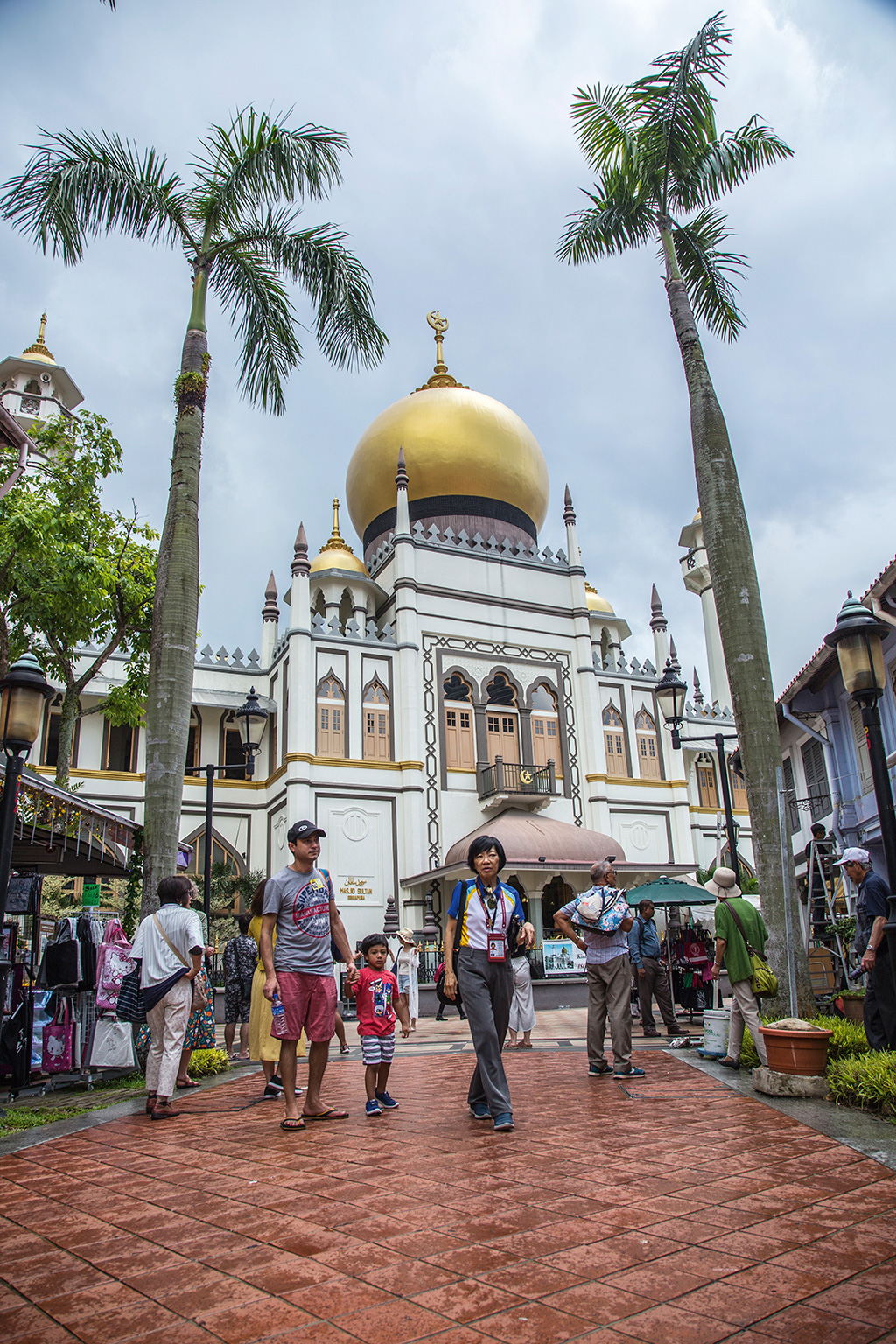
The original mosque, built for Sultan Hussein in the 1820s, became too small to meet the needs of the community in Kapong Glam, and was replaced by the Masjid Sultan in the 1920s. Image credit: Elise Kirsten
Back home it’s almost taken for granted that food is paired with wine. However, this close to the equator, a beer, cocktail or spirits are better suited. And it was a cocktail that brought me to one of the highlights of my visit, the Cé La Vi rooftop bar on the 57th floor of the Marina Bay Sands Hotel – but it was the view, not the drink, that had me giddy with delight. The hotel stands against the skyline like a leggy model cling-wrapped in sequins, its Vegas-like vibe complete with sports cars for hire parked out front. It’s likely I was rubbing shoulders with billionaires, film stars and the Insta-famous, but the night-time view of the cityscape was worth far more than any sense that I was playing in a space out of my league. Stepping out into the warm air on the balcony, I heard hotel guests splashing in the gigantic rooftop pool (the world’s highest elevated paddler). Lights shimmered across the water of Marina Bay as I sipped a gin-based Singapore Sling cocktail (of course), while the nightly Spectra light-and-water show unfolded 195 metres below. Being there felt surreal – I wanted to suspend time and soak up every detail of the view; to enjoy the feeling of the warm air on my skin and the sound of the vibey music indefinitely.
The following day I found myself in a fascinating corner of Singapore, Kampong Glam – the Malay and Arab quarter. The area is bookended by two large granite arches donated by the Sultanate of Oman, reflecting Kampong Glam’s role as a hub for Arab traders during Singapore’s early history, and the maritime and trade connection between the two countries. The Masjid Sultan mosque sits at the top of Muscat Street, and beneath its golden dome is a paved walkway lined with Lebanese and Turkish restaurants, shops selling traditional batik fabric, an alcohol-free perfumery and souvenir stores. Around the corner is Haji Lane – as colourful as a bag of Skittles, it’s the ‘most Instagrammed road’ in Singapore. Sentosa Island, off the southern coast and accessed from the city by road, cable car, pedestrian boardwalk or monorail, is Singapore’s playground. At Ola Beach Club, on Siloso Beach below forested Mount Imbiah, there were kayaks and SUPs for hire, but I decided to have a swim instead. Dipping into the warm waters of the Singapore Strait, with large tankers interrupting the skyline, I eavesdropped on a couple of Scandanavian tourists nervously joking about the possibility of sharks.
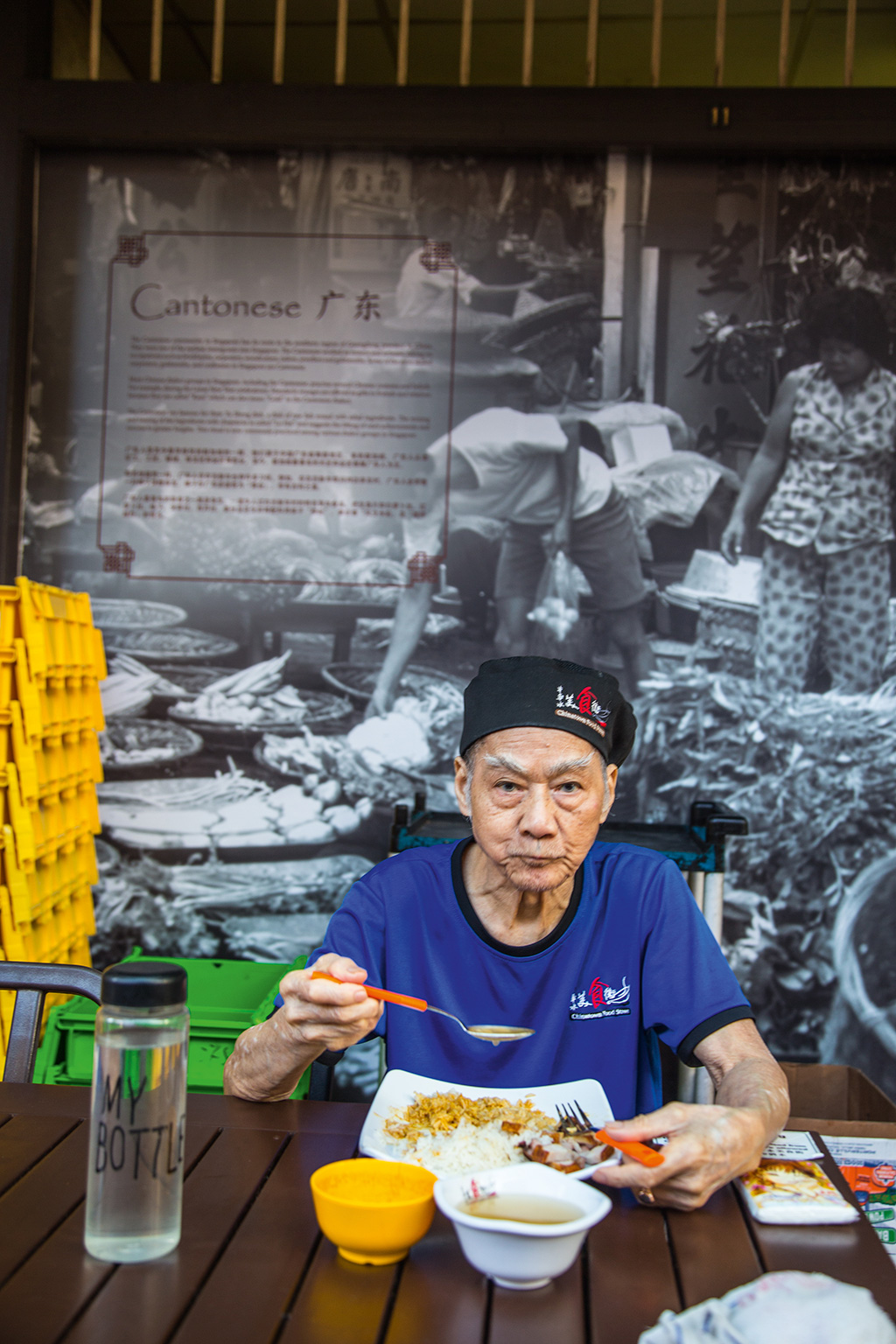
This local in Chinatown’s Food Street just nodded and continued eating his lunch when asked if he could be photographed. Image credit: Elise Kirsten
Singapore’s port, the world’s largest transshipment hub, is in the process of moving its facilities to the far west of Sentosa. The first-phase transition is scheduled for 2021 and will no doubt please Mark Zuckerberg and Jackie Chan, who I’m told both own properties on Sentosa. The views of the ocean were gorgeous from the ski-lift that hoisted us to the top of Sentosa’s Skyline Luge track. Later, hanging in a harness above the forest, I posed for the obligatory theme-park photo before swirling through the warm air on the longest zipline I’ve had the pleasure of being attached to. This must surely be the best way to enjoy Sentosa’s scenery.
My trip was rounded off with a visit to Chinatown’s Food Street the next day. Coloured flags and lanterns gave the place a celebratory air, while stalls and restaurants sold anything from ice cream and roast duck to tourist bric-a-brac. While sucking on a durian-flavoured ice lolly, I took in my surroundings: the murals, local children on their school holidays twirling freely around their parents, an old man sitting quietly eating his lunch. I headed off to Nanyang Old Coffee on the corner of Food Street and Smith to rest my feet and try the kaya toast, a staple served with coconut jam (boiled with pandan leaves) and Singaporean coffee. Despite not being a foodie, I had become intoxicated by the new and diverse flavours on my visit to the island nation. If Singapore’s cuisine could win me over, food aficionados will be in heaven.
Plan Your Trip
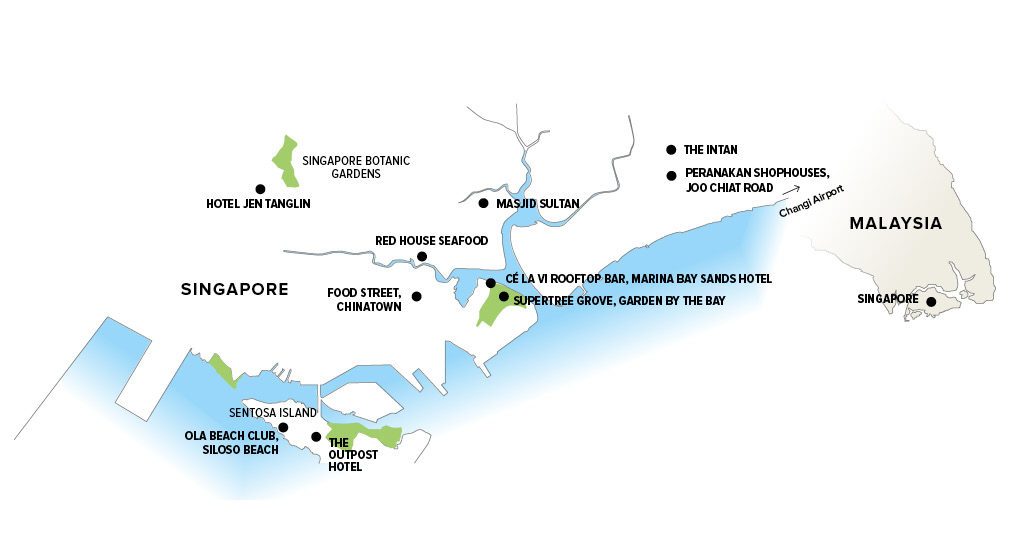
Getting There
Singapore Airlines flies direct from Joburg, with connections from Cape Town. From R10,000 per person return. singaporeair.com
Need To Know
SA passport holders don’t need a visa. Temperatures remain consistent (25–31°C) all year, as does the rainfall (it’s wettest in November). Hire a guide to get the most out of your visit. From R680 per hour. Contact Anthony Ang on +65-9236-9138, [email protected].
Stay Here
Hotel Jen Tanglin, at the top of Orchard Road, Central, is near a shopping area and 2km from the Botanic Gardens. From R1 325 per person sharing B&B. hoteljen.com
The Outpost Hotel on Sentosa is luxurious and a quiet base from which to explore the island. From R1 910 per person sharing B&B (no children under 12). theoutposthotel.com.sg

Ola Beach Club on Sentosa Island is a Hawaiian-themed, dog-friendly venue, hosting an assortment of events, from weddings to pet-adoption parties. Image credit: Elise Kirsten
Do This
Take the red bus on a one- or two-day hop-on, hop-off tour. From R430 per person. hop-on-hop-off-bus.com
Get a night view of Singapore from the Cé La Vi rooftop bar. Entry before 10pm is R237 per person, but it’s free after 10pm on certain days. marinabaysands.com
Go on – try durian. Known for its appalling smell, the fleshy fruit has a creamy, custard-like texture and unique flavour. R107 each from roadside sellers at Geylang Lorong 13 in Central.
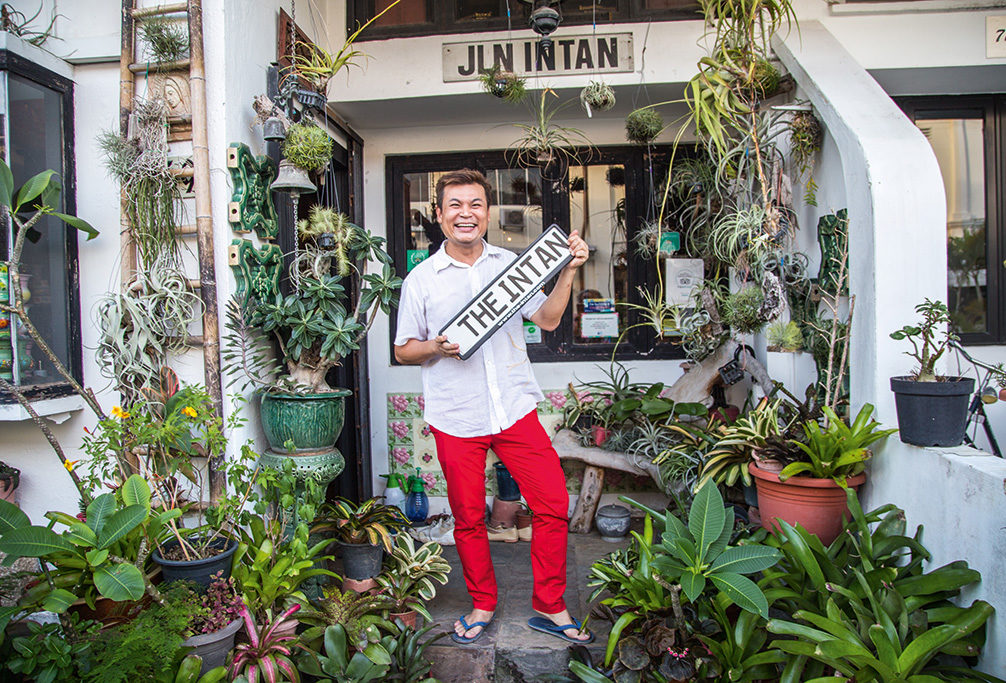
Alvin Yapp outside his home, a museum of Peranakan culture. Image credit: Elise Kirsten
Enjoy the free light show from the Supertree Grove at Gardens by the Bay. gardensbythebay.com.sg
Visit Singapore Botanic Gardens – an oasis of calm. Picnic on the lawns or eat at one of the restaurants. Free entry, except for the Orchid Garden (R54 per person). nparks.gov.sg/SBG
Visit The Intan to learn about Peranakan culture. By appointment only, R660 per person. the-intan.com
Get your thrills on Sentosa Island. Buy a Fun Pass (from R550 per person) for discounts to attractions including Universal Studios, the Aquarium and Maritime Museum. sentosa.com.sg
Eat Here
Lau Pa Sat is a market on Raffles Quay (in the CBD) for well-priced Chinese, North Indian, Korean, Vietnamese and Filipino food. From R48 per dish.
Red House Seafood at Clarke Quay on River Valley Road serves chilli crab as its speciality. From R1,300 for a crab that serves about five.
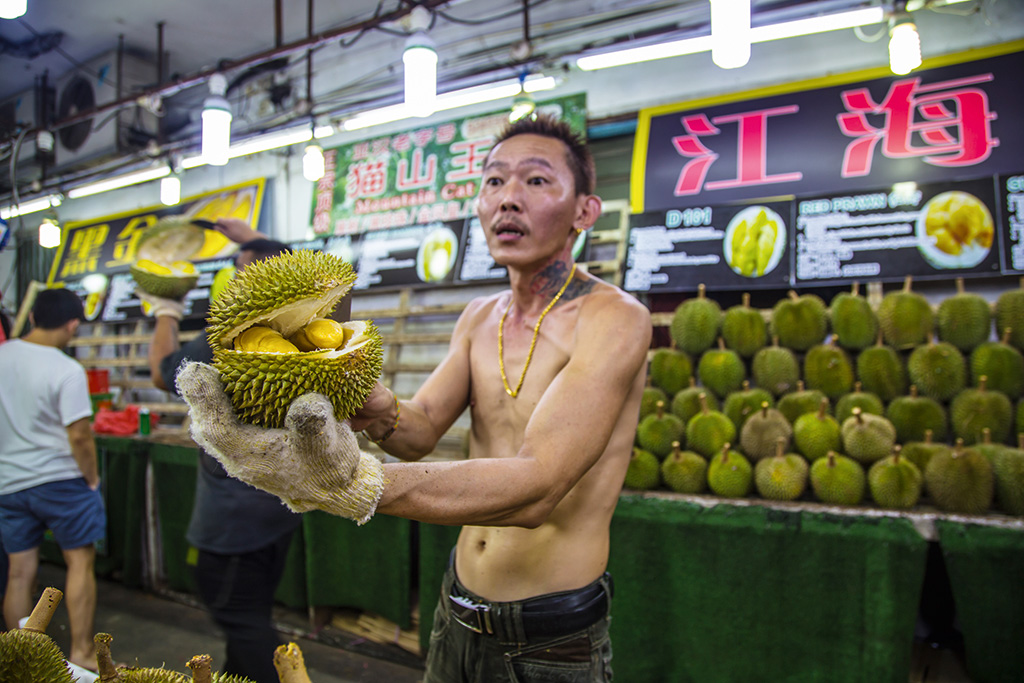
Curious about its smell, Elise Kirsten bought fresh durian at a fruit stall. Its indescribable scent was unique but not offensive to her. Image credit: Elise Kirsten










